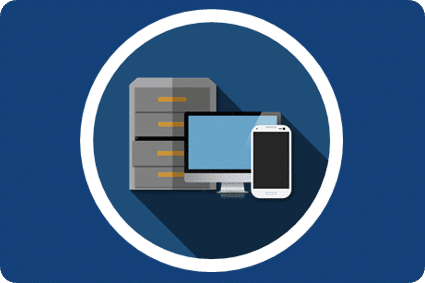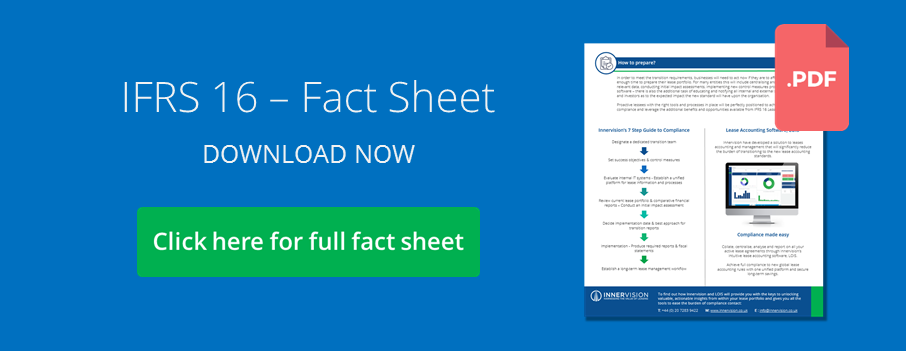What is the IFRS 16 Exemption for Low Value Assets? (With IFRS 16 Example)
Updated 24th March 2023 | 8 min read Published 6th October 2016


The new international lease accounting standard, IFRS 16 Leases, contains numerous transitional and general exemptions to help reduce the costs associated with bringing virtually all leases onto balance sheet. One of these exemptions, which many lessees have asked for additional clarification, is the option to not disclose leases for low value assets under IFRS 16.
“One of my great ambitions before I die is to fly in an aircraft that is on an airline’s balance sheet.”
Former IASB Chairman, Sir David Tweedie
Former IASB Chairman, Sir David Tweedie’s comment about the fact that a large number of aircraft contracts are IAS 17 operating leases and therefore do not appear on balance sheet, has become an iconic statement behind the development of the new international accounting standard. With the IASB’s estimate that 85% of leases are not recognised on balance sheets globally, it is understandable that the IASB and FASB felt a change was in order.
See more: Why lease accounting is changing to IFRS 16?
See more: IFRS 16 Guide and Lease Accounting Changes Summary
However, although IFRS 16 will revolutionise the way leases are accounted for and eliminate the accounting differences between finance leases and operating leases, the boards have been conscious to lessees growing concerns about the associated costs of transition and compliance. The exemption of leases for low value assets (as well as exemptions for short term leases and other transitional IFRS 16 reliefs) aims to maintain the balance between providing cost relief for lessees and preserving the benefits of improved information for the users of financial statements.
“During the course of the project, we learnt that generally speaking leases fall into two broad camps: Companies typically have a smaller number of high value leases, such as real estate or large equipment leases and high volumes of lower value leases for their office equipment.
“We heard many concern from lessees about the costs of applying the new standard, in particular, to these high volumes of low value leases.”
Associate Director, IASB
NB: It is vital to note that there is NO EXEMPTION for low value asset leases in FASB’s new lease accounting standard for US GAAP users.
See More: The differences between ASC 842 and IFRS 16
The small ticket lease exemption can be applied on a lease by lease basis, but does ask that leases of the same asset type receive the same treatment i.e. if you use the exclusion for computer tablets in one lease, then you should use if for other computer tablets in other leases.
A lease will qualify for the low value asset exemption if it meets the following criteria:
- The underlying asset is not dependent on, or highly interrelated with, other leased assets.
- The lessee can benefit from using the underlying asset on its own or with other readily available resources.
- Within the suggested threshold of roughly $5,000 as the value of the underlying asset when new.
- The lease is not the head lease in a sublease arrangement.
- The nature of the underlying asset, when new, is typically low value.
This criteria means that this exemption is only likely to impact underlying assets such as mobile phones, office furniture and other technological or operational equipment that is typically low value.
It is expected that the majority of low value asset leases would already likely be exempted through materiality concessions and, therefore, this exemption is unlikely to have a detrimental impact of the information available to users of financial statements, but will provide great relief to smaller companies, who will not need to prove the immateriality of exemption-qualifying leases under IFRS 16.
Leases that qualify for the low-value asset exemption, or one of the other exemptions, may continue to be treated as off balance sheet; entities should keep this in mind when accounting for leases.
Underlying asset’s links to other assets
One of the concerns to the exemption highlighted in the feedback to the IASB’s exposure drafts was the potential for larger assets that are ultimately made up of smaller leased assets to qualify for exemption from balance sheet recognition under IFRS 16, if each smaller lease is considered low-value.
To combat this, the board has included the criteria:
- The underlying asset is not dependent on, or highly interrelated with, other leased assets.
- The lessee can benefit from using the underlying asset on its own or with other readily available resources.
This means, for example, that a company that leases data storage components individually overtime, to make up a larger storage database, could not treat each lease of the smaller components as low-value. The storage components are highly interrelated with each other and therefore fail to meet the criteria.
IFRS 16 EXAMPLE: Van Tyre Lease
-
The 4 tyres of a van may be individually leased, however, without the van and without each other, they have extremely limited practical use and therefore rely on interrelation with readily available resources to function and do not qualify.
See more: Lease Accounting Examples of IFRS 16
$5,000 when new threshold
The threshold of $5,000 is not a hard, bright-line threshold.
One of the trickiest aspects of providing a quantitative or qualitative list of underlying assets that would and should qualify for the low-value exemption, is that it is extremely difficult to determine how assets will be used and valued in the future.
During the very early stages of discussions, before IFRS 16 even had a name, tablet computers didn’t exist, yet they have now integrated themselves within many business functions. This is a perfect example of how quickly the product market can change.
IFRS 16 Leases cannot express a specific figure for comparison or a comprehensive list of low value asset types, as numerous financial circumstances, including inflation and the supply/demand relationship of certain assets, is likely to fluctuate in the coming years. The board cannot guarantee that items such as tablets or wearable technology will hold the same value as they do currently and, therefore, any figure they state would need to be revised fairly consistently.
The threshold isn’t actually included within standard itself; it is in the basis of conclusions. However, entities are expected to use US$5,000 or less, when new, as a widely accepted basepoint.
Asset irrespective of materiality or of entity
It is also worth noting that this $5,000 figure will likely fall within many larger companies’ materiality threshold. When determining the value of the asset, lessees should focus on the underlying asset in question, rather than value of the asset in comparison to their business or the size and reputation of their company. A large multinational and a small local business should reach the same conclusion on the same underlying asset.
When asset is new
The exemption criteria should be applied to underlying assets to assess their value when they are new, not the current value of the asset in question. Naturally, a brand new asset will have a different value to a much older one. This is unlikely to impact leased assets such as office furniture, but larger assets, including large plant machinery, have a material impact on financial statements and should not be exempted because the asset was sold at a bargain price.
Head lease in a sublease agreement
IFRS 16 Leases requires the lessor in a sublease (i.e. the lessee in the original lease) to classify the lease based on the right of use asset on its balance sheet. If the low value exemption were taken on the original lease, then there would be no asset with which to make that assessment and, therefore, some potentially odd accounting consequences. This is why the low value exemption would not be valid when accounting for leases under IFRS 16.
Asset type typically low value when new
Similar to valuing the asset as if it were new, the same goes for asset types. This is mainly to ensure that high-value material assets are not excluded from financial metrics. A certain vehicle may be procured at a low value for various reasons, however, vehicles are typically above the $5,000 threshold when new and would therefore not qualify for exemption.
Master lease agreements
One concern from numerous lessees centres on how to treat multiple low-value assets that appear in one master lease. The IASB have provided guidance suggesting that, provided the agreement in substance represents separate small ticket assets, they may be treated as such. This may be implied through an umbrella agreement, with individual contracts for each asset beneath it or through an appendix that specifically names individual assets.
If the contract in substance did not allow for the separation of assets being named, i.e. if a master lease of 200 laptops included a clause that they were to be used together and cannot be separated, then this would likely breach one of the exemption criterion and therefore, would not qualify for exemption.
The low-value lease exemption is designed to capture leases that would provide a cost relief for lessees and would not disadvantage the users of financial reports. There are various reasons as to why the IASB cannot specifically state which assets would qualify, but the guidance should provide context as to the types of leases they were implying.
As an optional cost relief, this exemption should help reduce some of the reporting burden, particularly for smaller companies, whilst not denying financial statement users of useful financial leasing information.
Despite this relief, there is still much for companies to do in order to achieve lease accounting compliance. Before a lessee is able to determine whether they can qualify for the exemption, they need to collect, centralise and analyse all of their active leases. This is a long-winded process, particularly as large proportions of companies do not have a lease management software in place and as such are missing key leasing information.
Innervision is helping companies prepare for the upcoming implementation of new lease accounting standards IFRS 16 and FASB’s ASC 842. Innervision’s lease accounting software, LOIS, allows lessees to centralise all their leases on one unified platform and manage the entire transition process from one repository; including impact reports, readiness assessments, lease management and the complex accounting reports.
Find out about how companies are benefiting from LOIS’s lease accounting features here.

